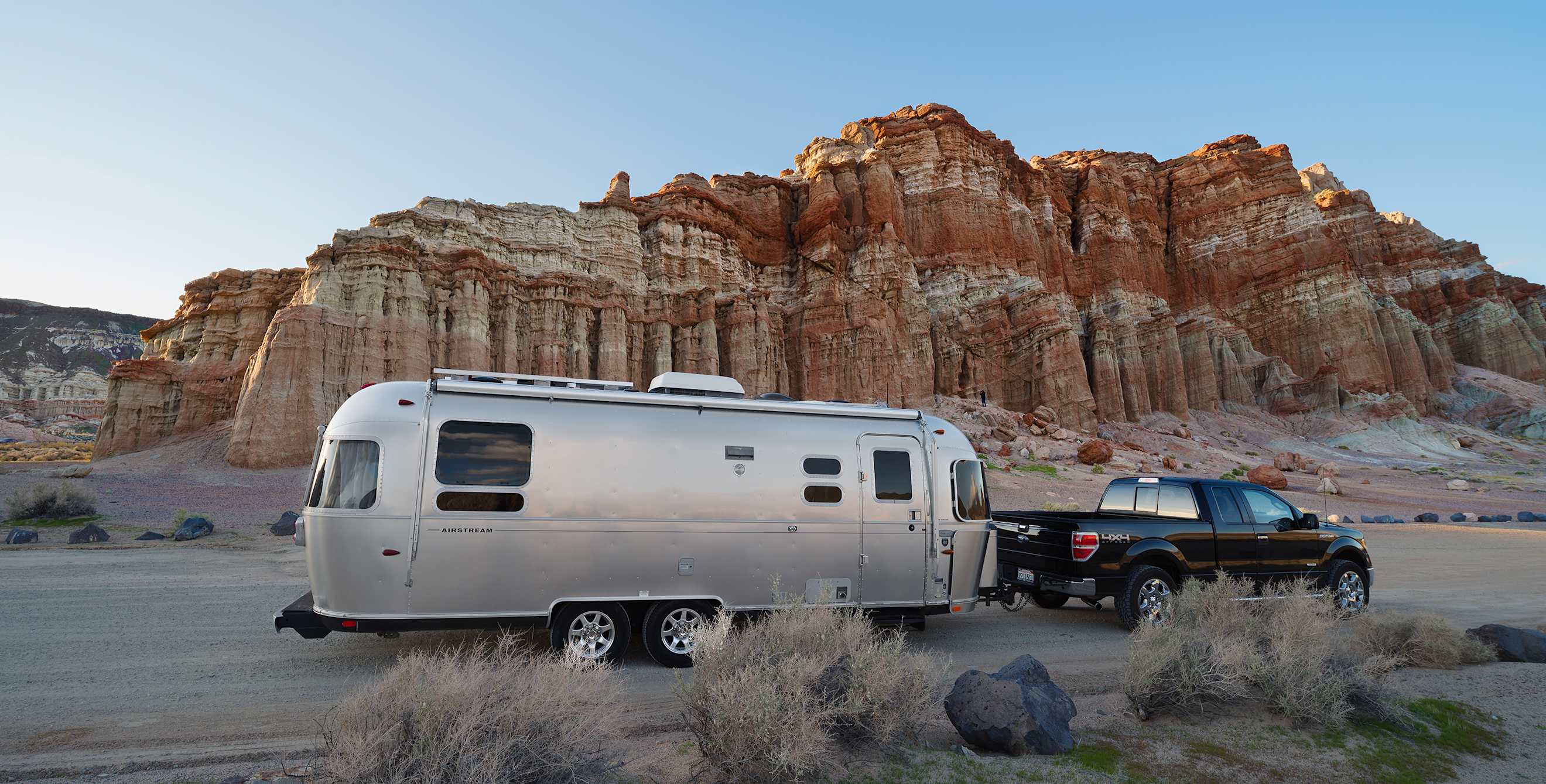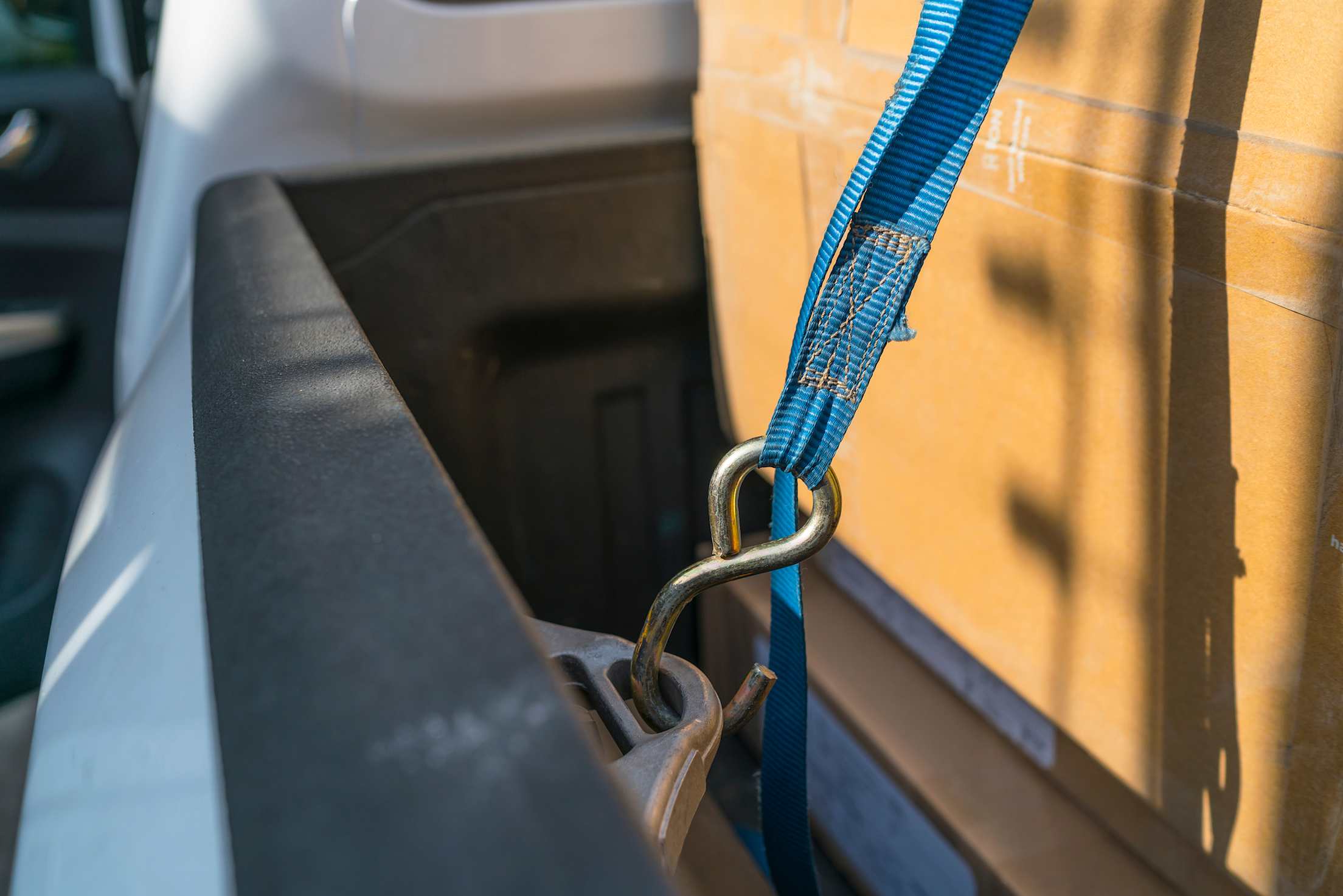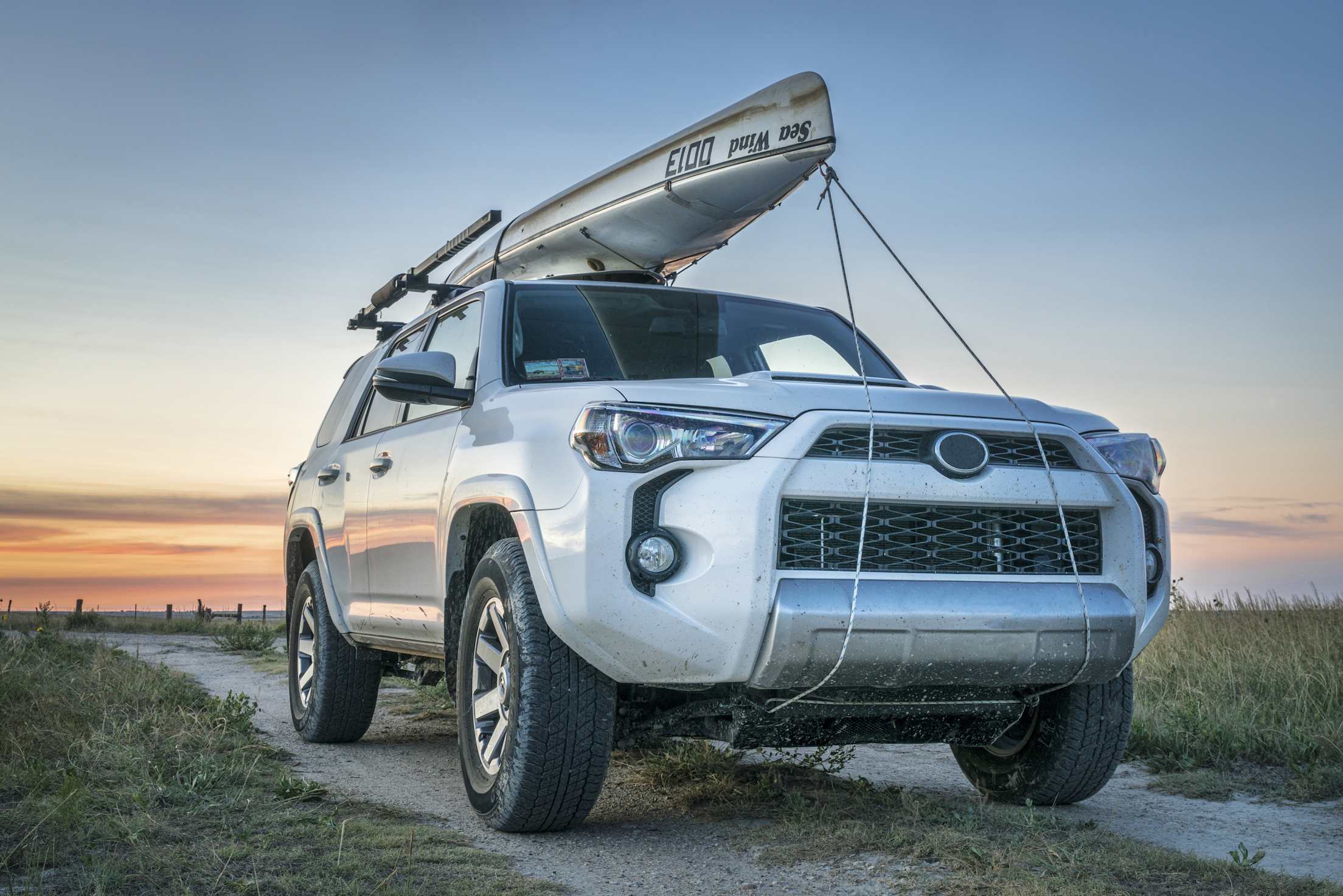
7 Safe Towing and Hauling Practices
Learn how to properly secure your belongings in a trailer and in a vehicle.

We’ve all seen the driver speeding along the highway with a tarp billowing or furniture wobbling in the back of their truck. This scenario isn’t just distracting, it’s also extremely dangerous. Debris is one of the leading causes of crashes, injuries, and deaths on U.S. roadways every year. But it’s preventable if you properly secure your items either in a trailer, on top of your car, or in the back of your vehicle.
Use these seven expert tips to safely transport items.
1. Know how much weight your vehicle can carry or tow.
How much you can carry inside and tow behind your vehicle varies based on the car’s make and model, as well as any upgraded trailer or towing packages you have equipped.
Carrying Capacity
To determine how much you can carry or tow, find your car’s gross vehicle weight rating (GVWR) either on the inside of the driver’s side door or in your user manual. This is the maximum loaded weight of your vehicle. Subtract your vehicle’s curb weight (also in your user manual) from the GVWR to determine how much you can tow or carry inside, including passengers, gasoline, and cargo. For example, if your car’s GVWR is 4,610 lbs and your car’s curb weight is 3,370 lbs, you can carry 1,240 lbs.
“For the person who’s going to a home improvement store for just the normal things, they don’t need to worry,” says David Bennett, repair systems manager at AAA. “But they should pay attention to that number if they’re grabbing bags of cement or pallets of sod.”
Towing Capacity
How much weight you can tow in a trailer—such as a moving trailer or a boat trailer—relies on different metrics: tongue weight and towing capacity.
- Tongue weight is the downward force exerted on the point a hitch and trailer connect, and it shouldn’t exceed 10 to 15 percent of the total weight of your trailer. You can measure tongue weight with a vehicle scale.
- Towing capacity is the amount of weight your vehicle can tow.
Your vehicle’s towing capacity is listed in the user manual, but you can also determine the maximum by using a towing capacity calculator offered by ExploreUSA or Camping World RV & Outdoor Sports.
2. Properly install a hitch for a trailer.
If you’re planning to tow anything, you’ll need a trailer hitch. This structural component bolts to points underneath your car and connects to a trailer. Hitches must be compatible with your car’s make and model. Companies such as etrailer.com and U-Haul can help you determine what you need, and they provide instructions and video tutorials so you can install one on your own. You’ll also need to wire your vehicle’s lights so brake lights and signals appear simultaneously on the back of the trailer.
Not confident in doing it yourself? Hire a professional at a dealership, an auto repair shop, or through nationwide retailers such as U-Haul or Pep Boys. Expect installation to cost at least $100.

3. Use strong rope or nylon straps at tie-down points.
Whether you’re pulling cargo in a trailer or carrying it on the roof or in the back of a truck or SUV, keep it secure by using rope, nylon straps, bungee cords, or netting. To preserve your paint, use a soft cloth as a buffer between your car and the straps. Learn how to tie different knots at animatedknots.com or opt for ratchet straps.
Larger and heavier items such as furniture or exercise equipment should be firmly secured directly to the vehicle. Many vehicles have tie-down points in the cargo area or truck bed for this purpose. Roof racks can also be used, but be mindful of their weight limits. Lighter items like bags of leaves or clothing can be secured underneath a tarp or netting with the same attachment points.
Doug Nick with the Arizona Department of Transportation suggests loading fewer items in your car to prevent flyaway debris if possible. “The temptation sometimes is to get as much on a truck or a trailer as possible to minimize the number of trips,” he says. “You find out very quickly, especially on a freeway or a highway, that a lot of that stuff catches the wind very easily.”
Keep in mind that the vehicle’s acceleration will cause drag and movement, and it will be especially apparent at higher speeds. This can cause additional settling and loosening. Before taking off, try wiggling or shifting your cargo to ensure it’s tied down properly, Nick says. If it moves, tighten the straps or ropes.

4. Check your mirrors often, and stop if needed.
Adjust your mirrors or add mirror extenders so you can see the back of your trailer or load. Once you start moving, Bennett suggests pulling over in a safe spot to ensure that everything is still secure. Stop every so often to check the straps and hitch, and pull over immediately if something looks amiss. “You don’t want it to fly off, land in the road, cause somebody else to swerve, and have an accident,” says Bennett.
5. Use a safety flag.
Many states, including California, require drivers to attach a red or orange fluorescent warning flag, cloth, or other signal to the end of their trailer or cargo. This law varies based on the state as well as trailer dimensions, types of hitch connections, length of loads, and more. Know what your state requires, and use lights or a bright flag to help other road users spot your load easily so they can safely navigate around you.

6. Slow down and drive carefully.
With a weighted load, acceleration and deceleration are going to feel different than they do with an empty vehicle. Brake earlier, accelerate and turn slower, and drive mindfully. And if you’re towing a trailer, it’s the law in some states to drive slower. In Arizona, speed must not cause the trailer to sway laterally. In California, the maximum speed when towing is 55 mph, and vehicles with a trailer must stay in the far right lane on a two-lane road or the first and second lanes to the right on a road with more than three lanes. In Utah, the speed limit is the same as passenger cars unless posted.
Regardless, plan for a longer trip. “Drive in the slower lane instead of in the passing lane,” Bennett says. “Or take the long way home if you need to.”
7. Know the towing laws in states you’re traveling through.
Hauling and towing laws differ in each state. Differences include speed limits, flag regulations, and overall length limits (for example, loads on a vehicle such as lumber or a kayak shall not extend 40 feet in Arizona). These are meant to keep you and other drivers on the road safe.
Finally, ask yourself: Would I feel safe driving behind my car?
Outsmart adversity with AAA auto, watercraft, and RV insurance policies.